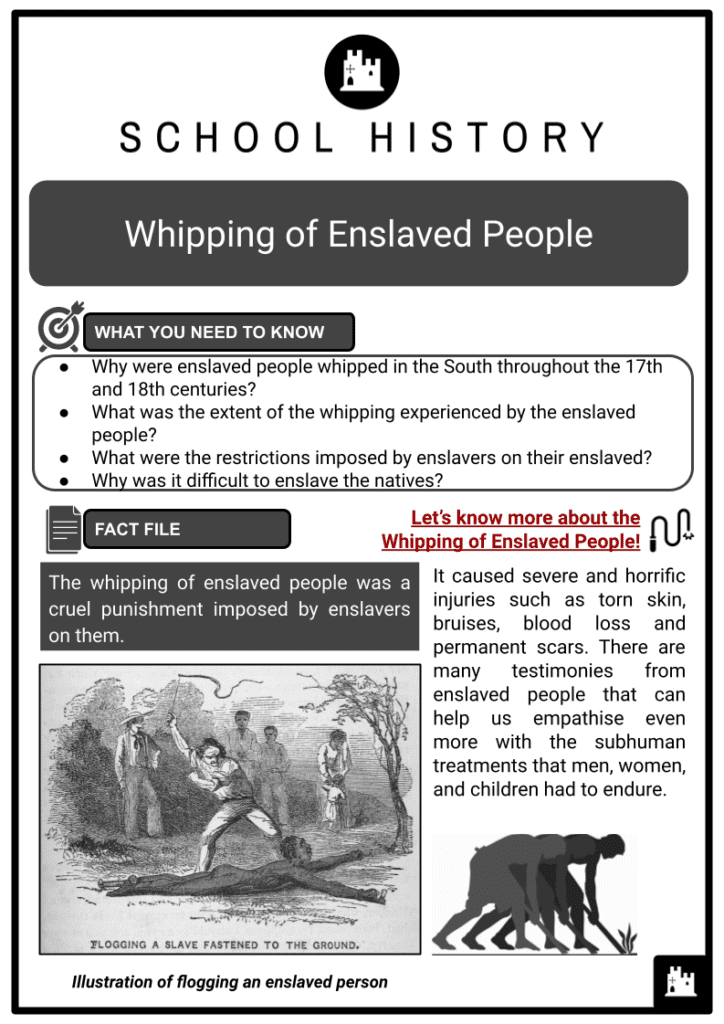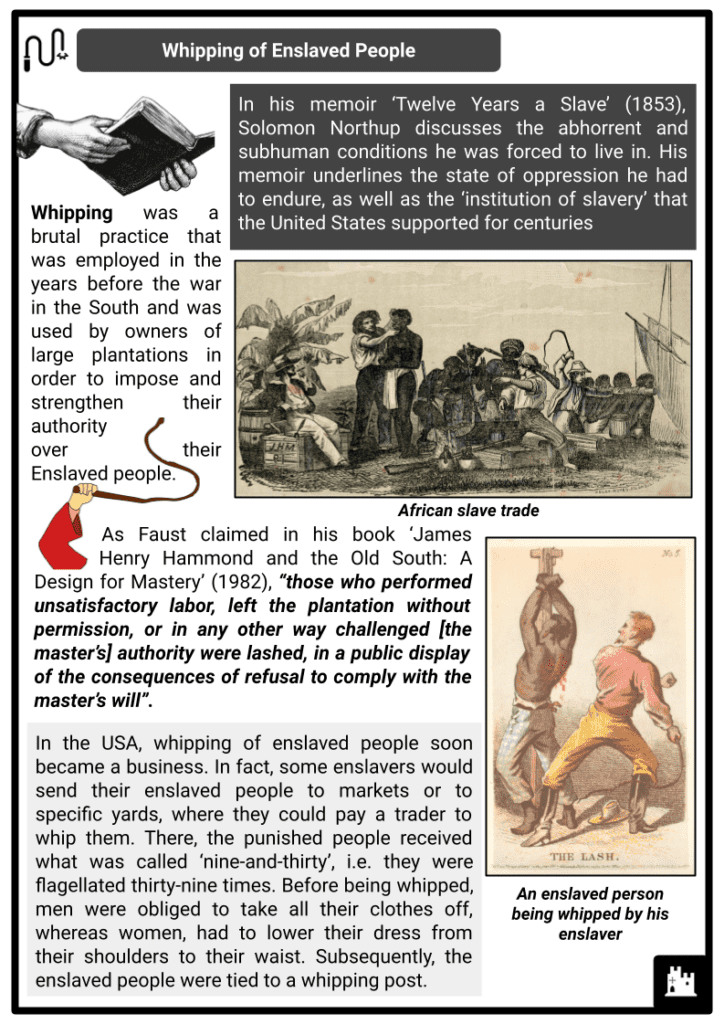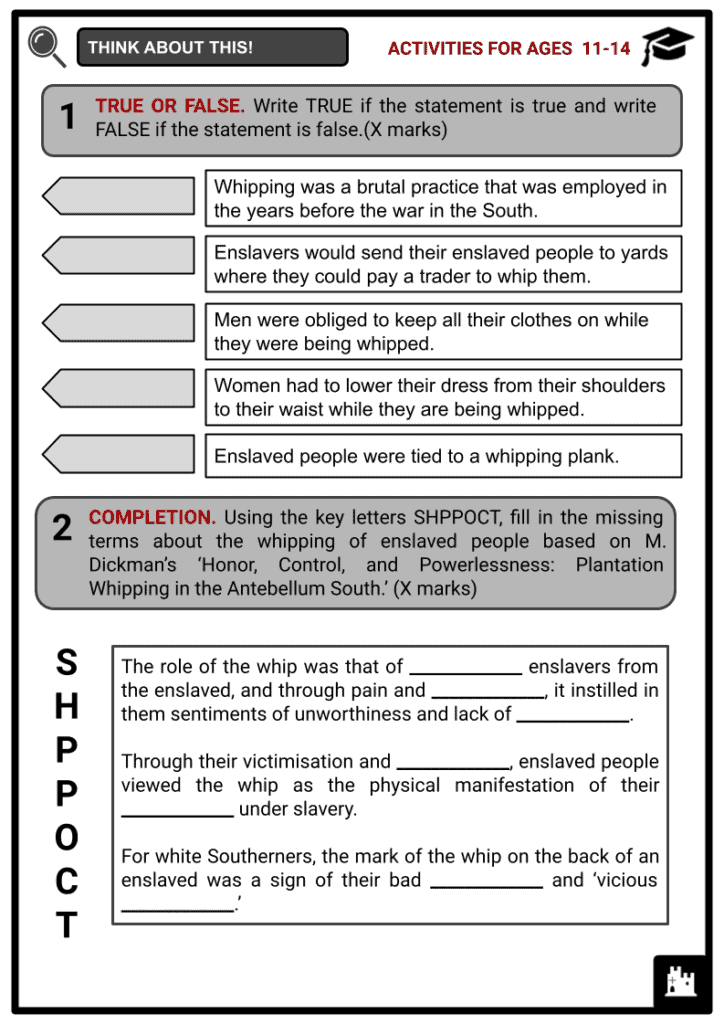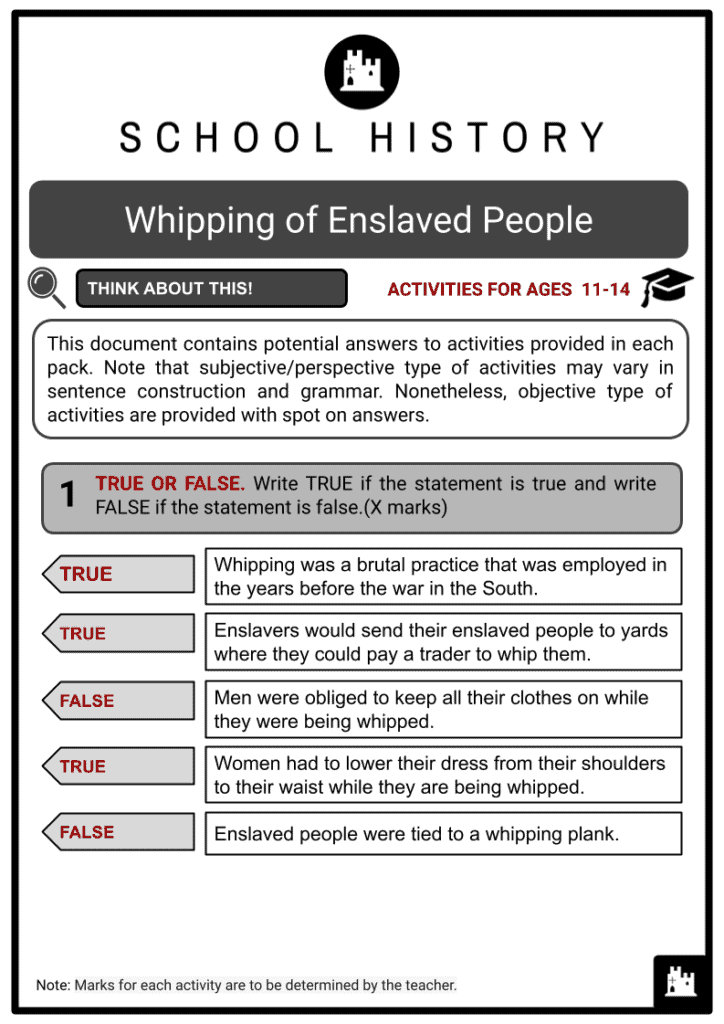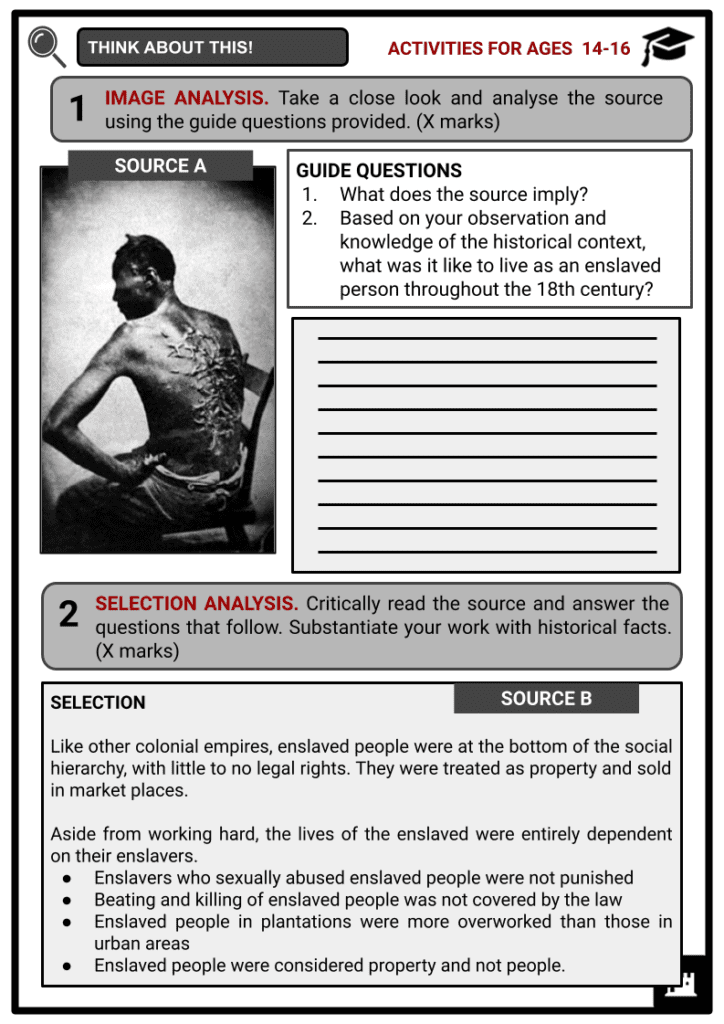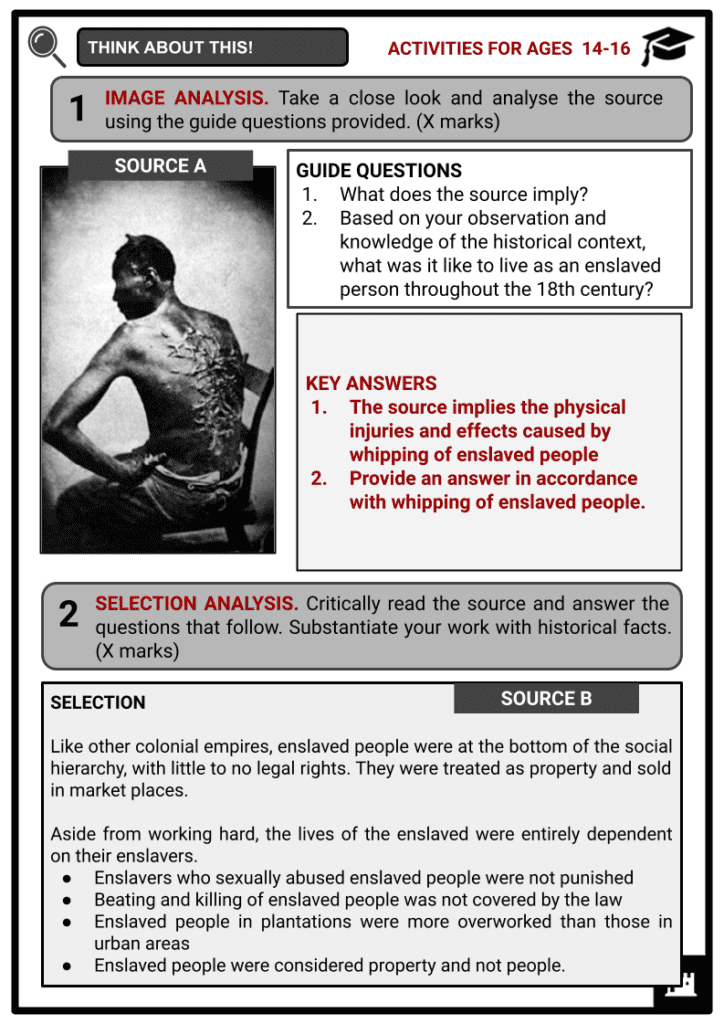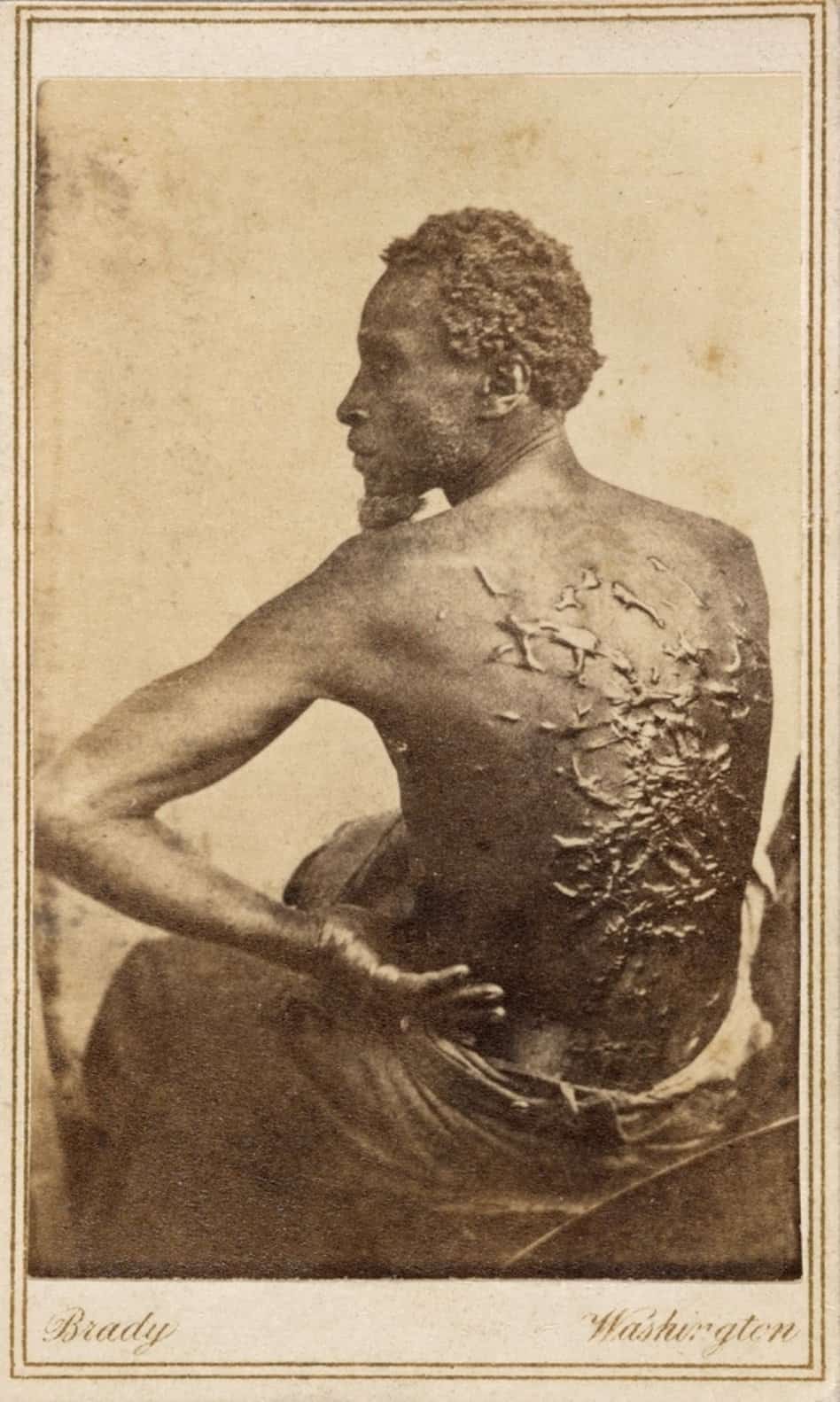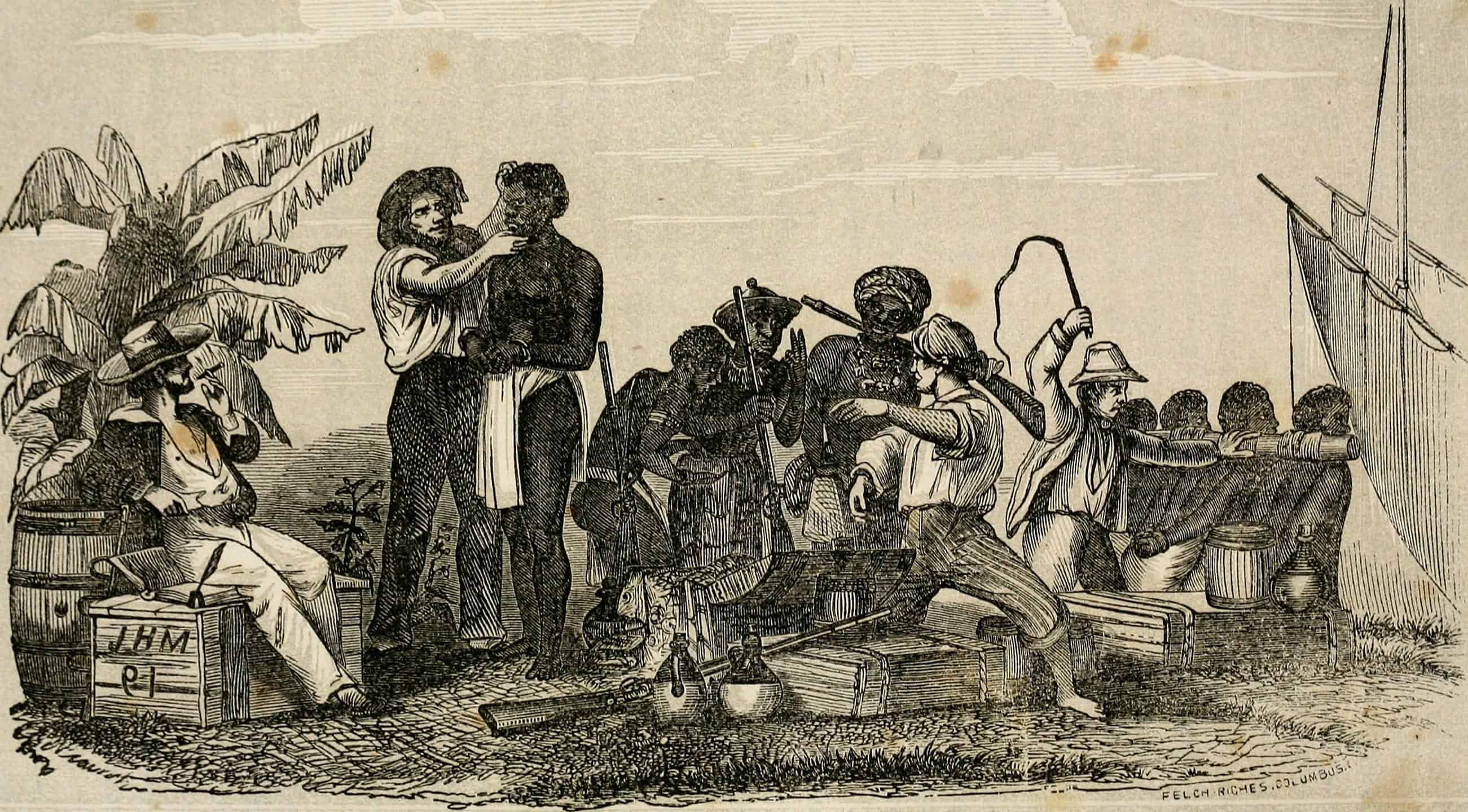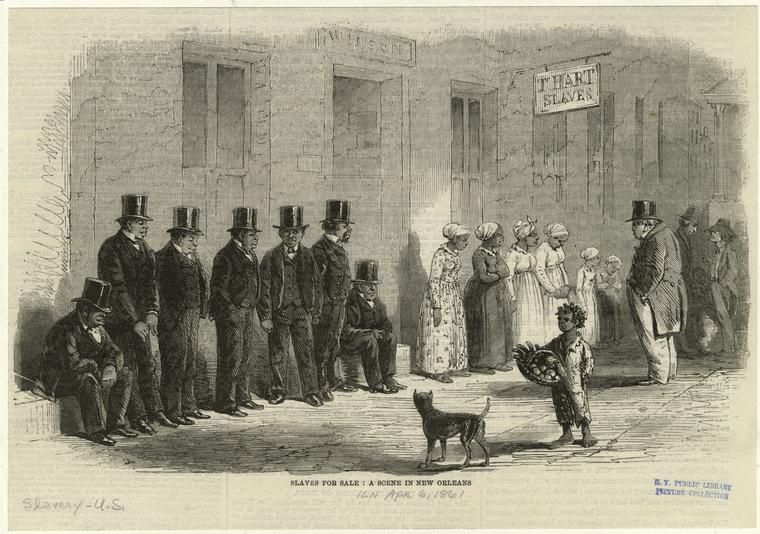Download Whipping of Enslaved People Worksheets
Do you want to save dozens of hours in time? Get your evenings and weekends back? Be able to teach Whipping of Enslaved People to your students?
Our worksheet bundle includes a fact file and printable worksheets and student activities. Perfect for both the classroom and homeschooling!
Table of Contents
Add a header to begin generating the table of contents
Summary
- Why were enslaved people whipped in the South throughout the 17th and 18th centuries?
- What was the extent of the whipping experienced by the enslaved people?
- What were the restrictions imposed by enslavers on their enslaved?
- Why was it difficult to enslave the natives?
Key Facts And Information
Let’s know more about the Whipping of Enslaved People!
- The whipping of enslaved people was a cruel punishment imposed by enslavers on them.
- It caused severe and horrific injuries such as torn skin, bruises, blood loss and permanent scars. There are many testimonies from enslaved people that can help us empathise even more with the subhuman treatments that men, women, and children had to endure.
Whipping of Enslaved People
- In his memoir ‘Twelve Years a Slave’ (1853), Solomon Northup discusses the abhorrent and subhuman conditions he was forced to live in. His memoir underlines the state of oppression he had to endure, as well as the ‘institution of slavery’ that the United States supported for centuries.
- Whipping was a brutal practice that was employed in the years before the war in the South and was used by owners of large plantations in order to impose and strengthen their authority over their enslaved people.
- As Faust claimed in his book ‘James Henry Hammond and the Old South: A Design for Mastery’ (1982), “those who performed unsatisfactory labor, left the plantation without permission, or in any other way challenged [the master’s] authority were lashed, in a public display of the consequences of refusal to comply with the master’s will”.
- In the USA, the whipping of enslaved people soon became a business. In fact, some enslavers would send their enslaved people to markets or to specific yards, where they could pay a trader to whip them. There, the punished people received what was called ‘nine-and-thirty’, i.e. they were flagellated thirty-nine times. Before being whipped, men were obliged to take all their clothes off, whereas women, had to lower their dress from their shoulders to their waist. Subsequently, enslaved people were tied to a whipping post.
- In the following passages are some testimonies of formerly enslaved, which will give a deeper insight in the pain they had to endure:
- In his memoir ‘Thirty Years A Slave‘ (1897), Louis Hughes writes: “I was but a lad, yet I can remember well the cruel treatment I received. Some weeks it seemed I was whipped for nothing, just to please my mistress’ fancy. Once, when I was sent to town for the mail and had started back, it was so dark and rainy my horse got away from me and I had to stay all night in town. The next morning when I got back home I had a severe whipping, because the master was expecting a letter containing money and was disappointed in not receiving it that night, as he was going to Panola to spend Christmas. However, the day came and all the family went except me. During the time they were gone the overseer whipped a man so terribly with the “bullwhip” that I had to go for the doctor, and when Dr. Heningford, the regular family physician, came, he said it was awful – such cruel treatment, and he complained about it. It was common for a slave to get an “over-threshing,” that is, to be whipped too much”.
- In ‘Twelve Years a Slave‘ (1853), Solomon Northup recounts his story: “[The master] interrupted me with such a flood of curses that I was unable to finish the sentence. At length, he ran towards the house, and going to the piazza, took down one of the overseer’s whips. The whip had a short wooden stock, braided over with leather, and was loaded at the butt. The lash was three feet long, or thereabouts, and made of raw-hide strands. […] Winding the lash around his hand, and taking hold of the small end of the stock, he walked up to me, and with a malignant look, ordered me to strip”.
- On the other hand, when Thomas Brown – an enslaved from South Carolina – had been found by bloodhounds after having escaped into the woods, the following situation happened: “I was severely punished by a board cut full of holes to raise the blisters, then I was whipped with a strap to burst the blisters, which were then salted and peppered. [..] This burned me very badly. [..] And I never tried to run away again.”
- Bill Collis, another enslaved born in Alabama in 1846, reported: “My master was so cruel to his slaves that they were almost crazy at times. [..] He would buckle us across a log and whip us until we were unable to walk for three days. On Sunday, we would go to the barn and pray to God to fix some way for us to be freed from our mean masters.”
- Both statements were documented in G. Morris’ ‘Unspeakable cruelty: Former slaves tell their stories in narratives Southern University’, which was put online in 2017.
- In essence, the harsh solution the enslavers took against their enslaved caused many horrific injuries such as torn skin, bruises, blood loss and permanent scars.
The Enslaver-Enslaved Dynamics
- By exerting their absolute authority, will and power, enslavers treated their enslaved as mere animals. In fact, their main intention was that of keeping a position of authority through the imposition of their physical force.
- As M. Dickman states in ‘Honor, Control, and Powerlessness: Plantation Whipping in the Antebellum South’, the role of the whip was that of separating enslavers from the enslaved, and through pain and humiliation, it instilled in them sentiments of unworthiness and lack of power.
- Moreover, enslaved people were not only enslaved in their work life, but also had restrictions within their private life.
- In fact, they were obliged to always ask their enslavers for permission for anything that they wanted to do.
- For example, if they wanted to get married, they had to ask their enslavers (and at times, their request was declined).
- In other instances, enslaved families would be split up if the enslaver decided to sell them to different enslavers.
- One of the enslaved reported: “My mother was sold away from me. [..] I was so lonesome without her that I would often go about my work and cry and look for her return, as I was told by some of the slaves that she would be brought back to me, but she never came back’.
- Also, their living conditions were appalling, and they were given the bare minimum necessary for their survival.
Slavery in America
- Slavery has existed in multiple societies, cultures, and times. However, the enslaved people in North East, Central and South America and the Caribbean originated mostly from the African west coast. This was mainly because during the XV century European powers such as Spain, Portugal, the Netherlands, France, and the United Kingdom had an aggressive expansionist foreign policy.
- In fact, following the discovery of the Americas in 1492, numerous journeys were made by the European countries not so much in order to satiate their wonder and spirit of discovery but rather to gain some sort of wealth through the exploitation of the new land and its natural resources.
- In other words, the goal was that of enriching Europe and making it more powerful.
- Initially, the settlers exploited the indigenous population in the mining of silver and gold.
- Therefore, the colonists were able to make high profits with no labour costs.
- From the start, the colonists engaged in brutal acts of violence: they would work people to death, cut off their limbs, or threaten them with murder in order to make them work faster.
- However, North America and the Caribbean did not have a concentration of precious metals, so their lands were exploited in a different manner. The early colonists yielded high profits by turning to crops like sugar, tobacco, rice, and cotton. The new settlers produced these crops by using slavery, since European workers required payment and/or other forms of protection.
- Africans were first enslaved by the Portuguese in the XV century upon their arrival on the African continent for trade purposes. However, at that time, slavery was not exclusive to Black people, and people could be enslaved as a consequence of raids and warfare.
- The next step saw European colonists turning to the African continent as a site for extracting enslaved people. The British were the first to do so in North America in 1619 when twenty enslaved people were transported against their will to Jamestown (Virginia). However, the first enslaved Africans had arrived in the Caribbean and in Latin America as early as the XIV century.
- Colonies were established with the purpose of making money for royal families, and rich colonists who owned land.
- Enslaved Africans continued to arrive in North America, South America and the Caribbean all throughout the XVI, XVII, XVIII centuries. It was only in the XIX century that slavery began to be eradicated, and to be considered unacceptable. However, the ‘condition’ of slavery was considered hereditary.
Why was it difficult to enslave the natives?
- Because the natives or the indigenous people were familiar with their own land.
- Therefore, many battles ensued since their objective was defending their land from the intruders.
- Those who lost the battles to the settlers would be enslaved.
- Moreover, the colonists did not have any knowledge of the new land and often got diseases since they were not immune (for example, many fell prey to malaria).
- The natives also caught diseases they were not familiar with (such as smallpox).
- West African population was more susceptible to slavery because of its proximity to other seaports and contact between America, Europe and Africa was very accessible.
- Although between nine and twelve million people were brought into the Americas, colonists soon resorted to reproduction within the colonies (that is also why slavery became hereditary - so new enslaved people did not have to be brought from Africa).
Image sources:
[1.] https://upload.wikimedia.org/wikipedia/commons/d/df/Gordon%2C_scourged_back%2C_NPG%2C_1863.jpg
[3.] https://upload.wikimedia.org/wikipedia/commons/c/c6/SlavesForSaleNewOrleans1861.jpeg

